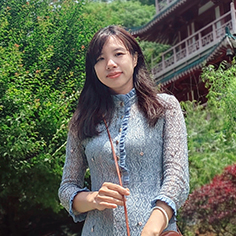Short Introduction to Chengdu Local Culture: History, Nation, Diet, Clothing, etc.
Chengdu, the capital of Sichuan Province in southwest China, is a vibrant city known for its rich history, laid-back lifestyle, and world-famous cuisine. As the home of the giant panda, it blends ancient traditions with modern innovation, featuring historic temples, lively teahouses, cutting-edge shopping districts, and a thriving cultural scene. With a history dating back over 3,000 years, Chengdu is also the gateway to scenic wonders like Mount Qingcheng and the Dujiangyan Irrigation System, making it a perfect blend of heritage and contemporary charm.
Brief History
Chengdu's history and culture are deeply rooted in the ancient Shu civilization, evolving through the eras of the Three Kingdoms and the prosperity of the Tang and Song dynasties. Blending elements of water management, poetry, and religion, Chengdu has developed its own unique cultural identity known as the “Tianfu Culture.”
From the Neolithic period to the Zhou dynasty, the Baodun Culture marked the early beginnings of civilization in the region. The discovery of the Jinsha Site revealed that Chengdu was once the capital of the ancient Shu Kingdom. During the reign of the Kaiming Dynasty, the Shu Kingdom established its capital here, and the city was named “Chengdu,” inspired by the Zhou King's move to Qiyi, where “a city was established in one year, and became a capital in two.”
In 316 BCE, the Qin state conquered the ancient Shu Kingdom and officially established Chengdu County as the seat of Shu Commandery. It was during this time that the city’s first urban layout was formed. The renowned governor Li Bing constructed the Dujiangyan Irrigation System, turning Chengdu into a land of abundance—earning it the nickname “Tianfu”, meaning “Land of Heavenly Abundance.”
During the Three Kingdoms period (221 CE), Liu Bei declared himself emperor, making Chengdu the capital of the Shu Han kingdom. Due to its flourishing brocade industry, the city was also known as “Jinguan City” or “Jincheng”, meaning “Brocade City.”
In the Wei, Jin, and Southern and Northern Dynasties, Chengdu remained an important political center. In 306 CE, Li Xiong declared himself emperor in Chengdu, founding the Cheng-Han regime. During the Southern Dynasties, it continued to serve as the administrative center of Yizhou and Shu Commandery, with different parts of the city governed as Greater Chengdu and Lesser Chengdu.
During the Tang Dynasty, Chengdu served as the seat of Yizhou. In 643 CE, a new county named Shu County was established alongside Chengdu County, both governed under Yizhou. By 757 CE, Shu Commandery was elevated to Chengdu Prefecture, and a year later, Shu County was renamed Huayang County, all under the jurisdiction of Chengdu Prefecture.
In the Five Dynasties period, rulers Wang Jian and Meng Zhixiang established their kingdoms here, making Chengdu their capital.
During the Song Dynasty, in 1059, the Yizhou Route was renamed Chengdu Prefecture Route, with Chengdu as its administrative center. It was also during this era that the world’s earliest form of paper money, Jiaozi, was invented here.
In the Yuan Dynasty (1257), Chengdu became the capital of Chengdu Circuit, home to the administrative headquarters of the Sichuan Branch Secretariat.
In the Ming Dynasty, Emperor Zhu Yuanzhang established the Sichuan Provincial Administration Commission in Chengdu and appointed his 11th son, Zhu Chun (Prince Xian), as the Prince of Shu, building a royal palace in the city—locally known as the "Imperial City".
In the late Ming period (1644), Zhang Xianzhong captured Chengdu, declared himself emperor, and founded the short-lived Daxi Kingdom.
In 1913, Chengdu Prefecture was abolished. Chengdu and Huayang became counties under Xikuan Circuit, and later, in 1914, under Western Sichuan Circuit. By 1928, Chengdu became directly administered by Sichuan Province. In 1930, the urban areas of Chengdu and Huayang were merged to form Chengdu City, while both counties remained governed from the city.
After 1950, Chengdu belonged to the Western Sichuan Administrative Region, and in 1952, it became directly governed by Sichuan Province, which it remains today.
Region Culture
Chengdu is not only a paradise for food lovers and leisure seekers, but also a city steeped in rich cultural heritage. With a history spanning over 2,300 years, this ancient city exudes historical charm at every turn. Chengdu’s regional culture is a vibrant blend of history, art, and everyday leisure. Step into Wuhou Shrine to immerse yourself in the legacy of the Three Kingdoms, stroll through the Thatched Cottage of Du Fu to feel the spirit of China’s revered poet, or explore the mystical Taoist atmosphere at Qingyang Palace. These cultural landmarks add depth and soul to the modern cityscape of Chengdu.
Rooted in the ancient Shu civilization, the city has long been a cultural hub in southwestern China. Known for its relaxed lifestyle, locals enjoy spending time in teahouses, playing mahjong, and savoring spicy Sichuan cuisine. Traditional arts such as Sichuan Opera, with its mesmerizing face-changing performance, remain a vital part of local entertainment. The dialect, folk customs, and craftsmanship, like Shu embroidery and lacquerware which are reflect the deep cultural heritage that Chengdu proudly preserves and integrates into modern life.
Lifestyle
Life in Chengdu flows at a relaxed, enjoyable pace. Locals have turned everyday living into an art form—savoring life’s pleasures, indulging in leisure, and embracing joy. One of the best ways to witness this is by visiting a traditional teahouse. Here, Chengdu people sip fragrant tea, read the newspaper, and chat about daily life, all while soaking in tranquil surroundings. Teahouse culture is a true symbol of Chengdu’s laid-back spirit. Even in the midst of a busy workday, people make time for rest and enjoyment. From strolling through leafy parks, Enjoy ear picking and playing mahjong, to watching Sichuan opera and whiling away hours in a teahouse, leisure is deeply woven into the Chengdu lifestyle.
Dialects
Chengdu mainly speaks Southwestern Mandarin dialect.
Traditional Festival
Chengdu Lantern Festival (15th day of the Lunar New Year): The Chengdu Lantern Festival is a vibrant traditional event that has evolved from the centuries-old custom of appreciating lanterns during the Lantern Festival. Lasting for a full month, the celebration fills local parks with dazzling lantern displays, lively folk performances, acrobatics, and an array of delicious street food. It’s a festive spectacle that brings together culture, artistry, and the joyful spirit of the Spring Festival.
Huazhao Festival (Flower Festival) :Celebrated on the 2nd, 12th, or 15th day of the second lunar month, the Huazhao Festival dates back to the Spring and Autumn Period and originated from ancient nature worship and legends of the Flower Goddess, Lady Yi. Traditional festivities include offering sacrifices to the Flower Goddess, spring outings to admire blooming flowers, and enjoying flower-shaped cakes. These customs reflect deep reverence for nature and a longing for beauty and harmony in life.
Great River Outing (Dayoujiang): Every year on the 19th day of the fourth lunar month, locals in Chengdu gather at Huanhua Creek to take part in the traditional “Great River Outing”. People enjoy boating on the creek, admiring the scenic beauty, or paying tribute to Lady Huanhua. Originating in the Tang Dynasty, this unique folk custom reflects Chengdu’s rich cultural heritage and deep connection to nature.
Spring Festival Customs: During the Spring Festival, traditional customs like “beating the spring ox” were once popular in both Chengdu and Huayang. This ritual, held during the spring plowing ceremony, symbolized hopes for favorable weather and a bountiful harvest in the coming year. Another vibrant tradition is the Dragon Dance, also known as "playing with the dragon lantern." With over 2,000 years of history, it was already widespread during the Han Dynasty. In ancient times, communities performed the dragon dance to seek blessings from the dragon for good weather and abundant crops.
Dujiangyan Water Releasing Festival ( Qingming Festival 4th April ): As the lifeline of the Chengdu Plain, the Dujiangyan Irrigation System plays a vital role in local agriculture. Each year, before the spring plowing season, the Water Releasing Festival is held and regarded as a sacred event by the local community. The celebration features a reenactment of ancient sacrificial rituals, with officials dressed in traditional costumes reading ceremonial texts to honor the legendary hydraulic engineers, Li Bing and his son. The ceremony culminates in the symbolic release of water, paying tribute to their enduring legacy and ushering in a season of abundance.
Diet Style and Culinary Tastes
Chengdu locals don’t just love to eat, they know how to eat well. Known for its balanced flavors and bold use of spice, Sichuan cuisine is famous for its signature combination of chili peppers, Sichuan peppercorns, garlic, and aromatic spices that create dishes both fiery and fragrant. As one of China’s four major culinary traditions, Sichuan cuisine has won the hearts of both locals and visitors. Chengdu proudly holds the title of a UNESCO "City of Gastronomy," and Pixian Doubanjiang, a fermented bean paste produced locally, is hailed as the soul of Sichuan cuisine. From high-end restaurants to street-side stalls, the city is a paradise for food lovers. Signature dishes include Mapo Tofu, Twice-Cooked Pork, Fish-Fragrant Shredded Pork, Kung Pao Chicken, Sliced Beef in Chili Sauce, Boiled Pork in Hot Chili Oil, Spicy Rabbit Head, Tea-Smoked Duck, and the ever-popular hotpot skewers known as chuanchuanxiang.
Read More local Food-Restaurants in Chengdu »
Cultural Heritage
Chengdu’s cultural heritage is distinguished by its rich array of both tangible and intangible elements, encompassing historic architecture, archaeological sites, traditional crafts, and folk arts. Among the most iconic symbols are the Dujiangyan Irrigation System, Wuhou Shrine, Sichuan Opera's dramatic face-changing (bian lian), and the stunning Golden Sunbird ornament.
Chengdu’s tangible heritage includes the Dujiangyan Irrigation System, a UNESCO World Heritage Site and a 2,200-year-old hydraulic marvel that still functions today, reflecting the ancient Chinese wisdom of ecological engineering. The Jinsha Site Museum showcases relics of the ancient Shu civilization, with the Gold Sunbird motif now serving as China’s official cultural heritage emblem. The city is also home to 41 nationally protected historical sites, such as the Wuhou Shrine, Dufu Thatched Cottage, and Mount Qingcheng.
Customize Your Unique Chengdu Tour

Alternatively, if you would like to customize your Chengdu tour, please visit our Chengdu Tour Customized Center. We assure you that you will receive a reply within 24 working hours.
Informative Articles for Your Chengdu Trip
 Jiuzhaigou Valley
Jiuzhaigou Valley- Chengdu Travel Guide: attractions, weather, food, culture, tours, etc.
- Chengdu Culture: rich and unique
- Travel itinerary: various itineraries for your reference
- Weather: the best time and seasons to visit Chengdu
- Attraction: well-selected top attractions
- Activities: Chengdu cultural immersions
- Where to Visit: top places to visit in Chengdu
- Unique Perspective: top things to do in Chengdu
- Food and Restaurants: what and where to eat while traveling in Chengdu
- Accommodation: handpicked hotels for you
- Chengdu Tours: tailor-made Tours for your reference
GREAT FAMILY CHINA TOUR
JULY 2024 We wanted to thank Grace at China Culture tour for organizing a great tour of China. We enjoyed our Beijing - Xian-Chengdu -Guilin -Yangshuo - Shanghai trip. Our local guides Bruce in Beijing, Susan in Xian, Jane in Chengdu, Mike in Guilin and Mary in Shanghai took care of us…read more details »
Teng Han L from SINGAPORE
Ready to Create a Unique Dream Travel?


